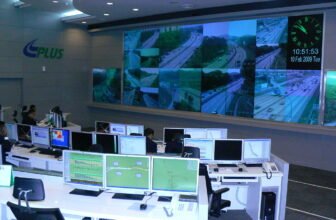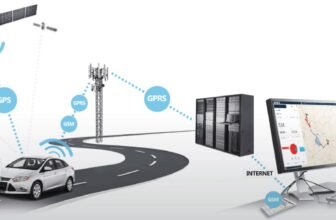
How Satellite Technology is Useful in Defense and National Security?
Satellite technology has revolutionized modern defense and national security. It provides critical support for intelligence gathering, surveillance, reconnaissance, communication, navigation, and early warning systems. The strategic advantages offered by satellites make them indispensable for military operations, border security, and disaster response. This article explores the various ways satellite technology enhances defense and national security.
1. Intelligence, Surveillance, and Reconnaissance (ISR)
1.1 Real-Time Monitoring
One of the most crucial roles of satellites in defense is real-time intelligence gathering. Modern satellites equipped with high-resolution cameras and synthetic aperture radar (SAR) can provide detailed images and videos of any region on Earth. This capability allows defense agencies to monitor enemy movements, assess threats, and plan countermeasures effectively.
1.2 Geospatial Intelligence (GEOINT)
Satellites contribute to geospatial intelligence by collecting and analyzing spatial data. Military analysts use satellite imagery to create detailed maps, detect anomalies, and identify potential threats. GEOINT helps in planning missions, securing borders, and responding to emergencies efficiently.
1.3 Signals Intelligence (SIGINT)
Satellites intercept and analyze electronic signals from communication networks, radars, and other sources. This intelligence helps defense agencies track terrorist activities, prevent cyberattacks, and counter electronic warfare tactics.
2. Secure Communication
2.1 Military Satellite Communications (MILSATCOM)
Satellite communication is essential for maintaining secure and uninterrupted communication between military forces. MILSATCOM provides encrypted voice, video, and data transmission, ensuring that critical information remains confidential and protected from cyber threats.
2.2 Global Connectivity
Military operations often take place in remote and hostile environments where conventional communication infrastructure is unreliable or nonexistent. Satellite technology ensures global connectivity, allowing military units to stay connected regardless of their location.
2.3 Communication During Natural Disasters
In the event of a natural disaster or an infrastructure collapse, satellite communication remains operational. This capability allows defense forces and emergency responders to coordinate rescue operations, distribute aid, and maintain public order.
3. Navigation and Precision Targeting
3.1 Global Positioning System (GPS)
The Global Positioning System (GPS) is a satellite-based navigation system that provides accurate positioning and timing information. The military uses GPS for troop movements, aircraft navigation, and naval operations.
3.2 Precision-Guided Munitions
Satellites play a critical role in precision targeting. GPS-guided missiles and bombs ensure that military strikes hit their intended targets with minimal collateral damage. This capability enhances operational effectiveness while reducing the risk to civilian populations.
3.3 Search and Rescue Missions
Satellite-based navigation aids in search and rescue operations. Whether locating downed pilots or stranded soldiers, satellites provide accurate location data, enabling rapid response teams to conduct successful rescue missions.
4. Early Warning and Missile Defense
4.1 Detection of Ballistic Missile Launches
Early warning satellites detect and track ballistic missile launches using infrared sensors. These satellites provide critical data to defense systems, allowing nations to respond to potential threats before they reach their targets.
4.2 Space-Based Missile Defense Systems
Some advanced missile defense systems rely on satellite-based tracking and interception technologies. These systems help neutralize incoming threats by providing real-time target tracking and guidance for missile interceptors.
4.3 Monitoring Nuclear and Chemical Threats
Satellites detect and monitor nuclear tests, chemical weapon activities, and other hazardous events. This capability helps in enforcing international treaties and preventing the proliferation of weapons of mass destruction.
5. Border Security and Counterterrorism
5.1 Monitoring Illegal Activities
Satellites play a vital role in tracking illegal border crossings, drug trafficking, and smuggling activities. High-resolution imagery and thermal imaging help security forces detect and intercept threats before they escalate.
5.2 Counterterrorism Operations
Intelligence gathered from satellites assists in identifying terrorist hideouts, tracking movements, and planning counterterrorism operations. Real-time satellite feeds support drone strikes and special forces missions against high-value targets.
5.3 Maritime Security
Naval forces use satellites to monitor suspicious maritime activities, including piracy and illegal fishing. Satellite imagery helps in enforcing maritime laws and protecting national waters from external threats.
6. Cybersecurity and Electronic Warfare
6.1 Protecting Military Networks
Satellites are integral to military networks, and their security is paramount. Advanced encryption and cybersecurity measures ensure that satellite communications remain protected from cyber threats and electronic warfare tactics.
6.2 Electronic Countermeasures
Modern defense systems use satellite data to detect and counteract electronic warfare threats. Anti-jamming technologies and signal encryption protect military operations from adversary interference.
6.3 Space-Based Cyber Defense
With the increasing risk of cyber warfare, space-based cybersecurity initiatives aim to safeguard satellite networks from hacking and sabotage. Nations are investing in resilient satellite architectures to withstand cyberattacks.
7. Disaster Response and Humanitarian Assistance
7.1 Rapid Damage Assessment
In the aftermath of natural disasters, satellites provide crucial data for assessing damage and coordinating relief efforts. Governments and defense agencies use satellite imagery to deploy resources efficiently.
7.2 Search and Recovery Operations
Satellites assist in locating missing persons, collapsed structures, and areas in need of urgent aid. This technology plays a key role in disaster recovery missions and humanitarian assistance programs.
7.3 Climate and Environmental Monitoring
Environmental changes can pose security risks, such as food shortages and displacement crises. Satellites track climate patterns, deforestation, and water scarcity, allowing governments to take preventive measures.
8. Future of Satellite Technology in Defense
8.1 Small Satellites and Constellations
The future of military satellite technology lies in small satellites and satellite constellations. These systems provide redundancy, resilience, and faster data transmission, enhancing overall defense capabilities.
8.2 Artificial Intelligence (AI) and Machine Learning
AI-powered satellites can analyze vast amounts of data in real time, improving decision-making processes. Machine learning algorithms help detect anomalies, predict threats, and automate intelligence gathering.
8.3 Space Warfare and Defense Strategies
As space becomes a contested domain, nations are developing space-based defense strategies. Anti-satellite weapons, space-based radars, and autonomous satellites are being researched to protect national interests in space.
Satellite technology is an indispensable asset in defense and national security. From intelligence gathering to secure communication, navigation, and missile defense, satellites provide unmatched capabilities that enhance military effectiveness. As technology advances, the role of satellites in defense will continue to evolve, ensuring that nations remain prepared for emerging security challenges. Investing in satellite innovation will be crucial for maintaining global stability and national defense in the future. image/thebluediamondgallery





